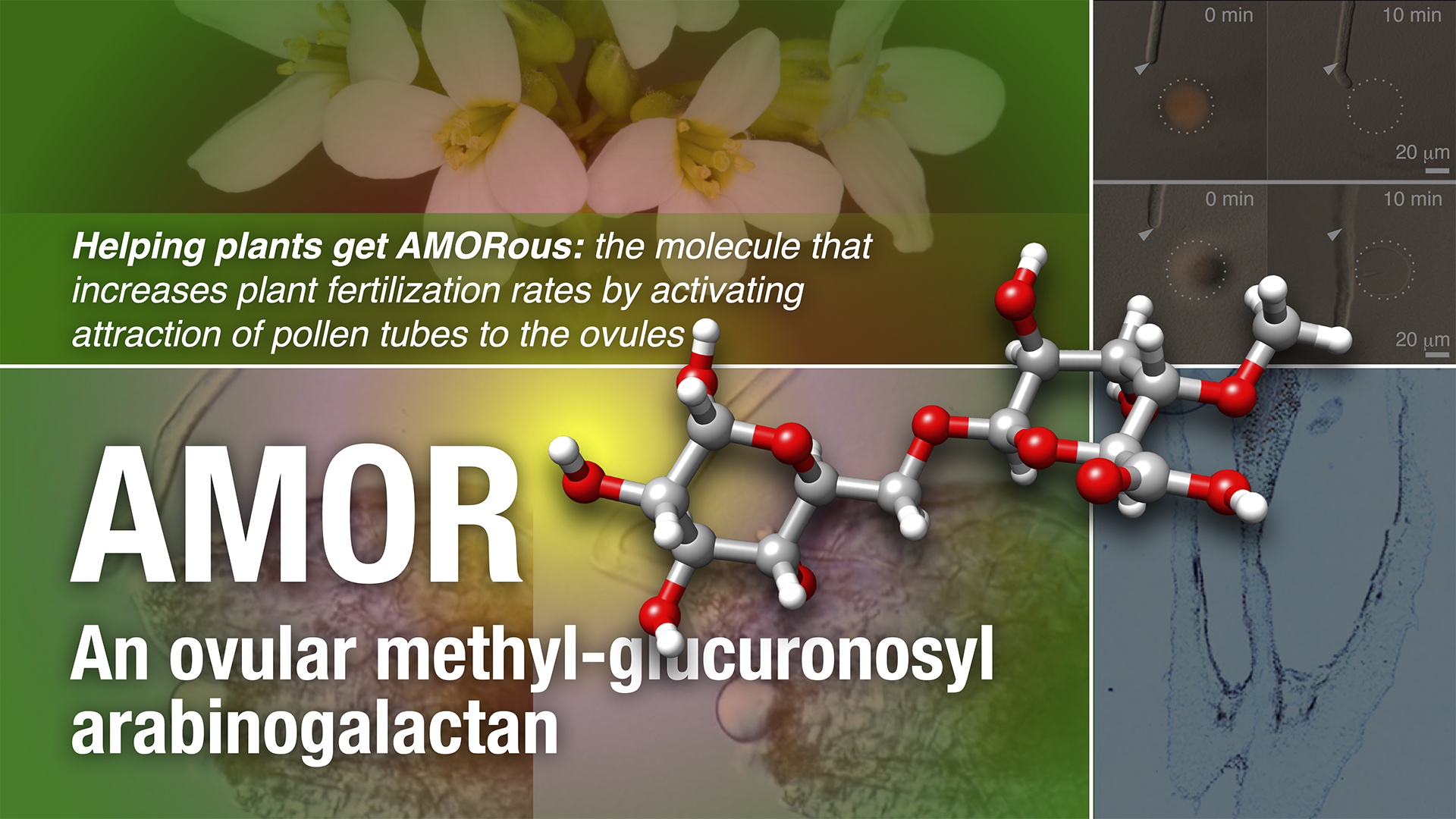
Activation of pollen tubes for gamete delivery to the ovule
In flowering plants, pollen collects at the tip of the pistil, extending what are known as ‘pollen tubes’ down through the pistil towards the ovules, which contain the egg cells. In order to avoid getting lost on their long journey down the pistil, the pollen tubes must receive signals which guide them towards the ovules.
In mammals, the system known as ‘capacitation’, in which the male gamete is activated by an agent originating in the female system, has long been understood. In plants, the molecular mechanism by which pollen tubes, which transport the immobile plant sperm cells, are activated, has remained a mystery.
Using Torenia fournieri as a model plant, ITbM researchers succeeded for the first time in identifying the pollen tube activator. The activator is made of a plant-specific sugar chain, arabinogalactan, with the two-sugar unit (disaccharide) at its terminus being the active component. They named it Activation Molecule for Response-Capability (AMOR).
Steps towards a new development in plant sugar chain research
The researchers then synthesized the disaccharide they had found at the terminus, and added it to a culture medium containing pollen and an ovule. The pollen tubes in this culture changed their direction of growth towards the ovule. When the disaccharide was not added to the culture medium, the pollen tubes simply grew straight, their ends moving past the ovule. This clearly indicates that AMOR is essential to pollen tube guidance, living up to its name and acting as a matchmaker for the male and female plant gametes.
The discovery of AMOR is expected to contribute not only to the study of plant fertility rates, but also new research into the role of sugar chains in signaling in plants.
Reference
“The AMOR arabinogalactan sugar chain induces pollen-tube competency to respond to ovular guidance" by Akane G. Mizukami, Rie Inatsugi, Jiao Jiao, Toshihisa Kotake, Keiko Kuwata, Kento Ootani, Satohiro Okuda, Subramanian Sankaranarayanan, Yoshikatsu Sato, Daisuke Maruyama, Hiroaki Iwai, Estelle Garénaux, Chihiro Sato, Ken Kitajima, Yoichi Tsumuraya, Hitoshi Mori, Junichiro Yamaguchi, Kenichiro Itami, Narie Sasaki and Tetsuya Higashiyama, Current Biology 2016, 26, 8, 1091-1097. DOI: 10.1016/j.cub.2016.02.040